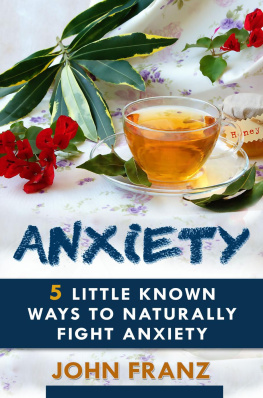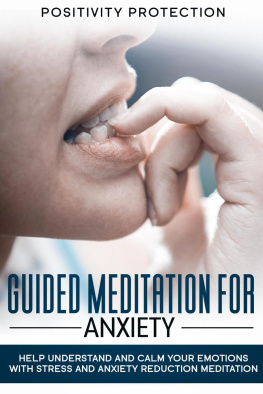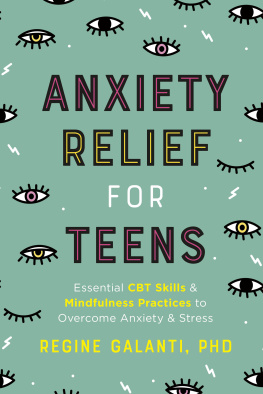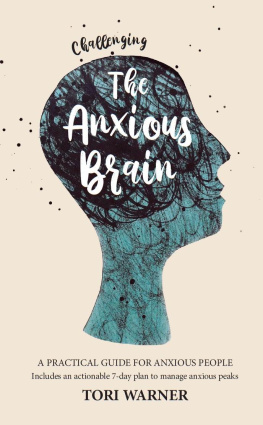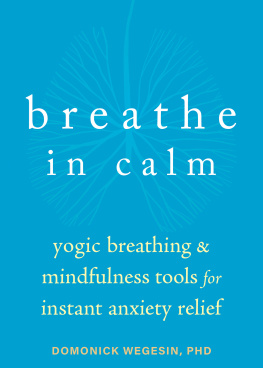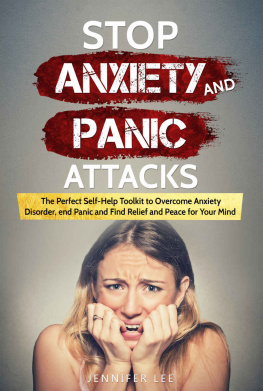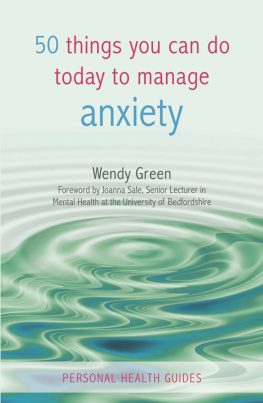The Self Help Guide for Anxiety Relief: Discover 6 Proven Anxiety Relief Techniques That Work
Understand How Your Brain Works and How to Manage Anxiety for A Healthy Mind and Body
By: Paula Miller
Publisher Notes
Disclaimer
This publication is intended to provide helpful and informative material. It is not intended to diagnose, treat, cure, or prevent any health problem or condition, nor is intended to replace the advice of a physician. No action should be taken solely on the contents of this book. Always consult your physician or qualified health-care professional on any matters regarding your health and before adopting any suggestions in this book or drawing inferences from it.
The author and publisher specifically disclaim all responsibility for any liability, loss, or risk, personal or otherwise, which is incurred as a consequence, directly or indirectly, from the use or application of any contents of this book.
Any and all product names referenced within this book are the trademarks of their respective owners. None of these owners have sponsored, authorized, endorsed, or approved this book.
Always read all information provided by the manufacturers product labels before using their products. The author and publisher are not responsible for claims made by manufacturers.
Copyright 2014 Paula Miller - All rights reserved.
Table of Contents
DEDICATION
This book is dedicated to my family and friends who have supported me through many of my challenges.
Introduction
Are you worried, afraid, or perhaps nervous? Do you lack sleep, feel tired, and panicky? These sorts of feeling are generally termed as anxiety, which is a normal reaction of the brain resulting from many factors causing imbalance or challenge in our daily lives.
Know that these mental imbalances can make a great impact on what we feel and behave. Anxiety can leave real physical manifestations of indifference and the symptoms can be great. Mild anxiety is indistinguishable and can really be troubling. On the other hand, severe anxiety can be severely devastating, which can leave a great change on ones lifestyle.
A person who prepares for a test or is about to face a job interview, the feeling of nervousness, fear, and worry is understandable. These feelings prior to these types of challenges are normal.
Anxiety becomes a major problem when a person is not able to get over it, when it affects sleep, and even the daily activities of a person. When the reaction is not balanced to normal expectation, then anxiety symptoms and its roots will have to be corrected.
According to medical professionals, it has been ruled out that anxiety has various types; more specific to what one feels and experiences.
Common Forms of Anxiety
General Anxiety Disorder
People experiencing GAD are characterized by long lasting fear and worry of many things, which can be money, career, family, or even school. Their feelings become un-proportion and very unrealistic, which greatly affects their performance in their daily endeavors. The problem with people having GAD is the inability to point out the specific fear and the problem to control worry.
Panic Disorder
A panic disorder is characterized by panic attacks. A panic attack is a sudden feeling of fear and rush to get away from something, scrambling to get to the nearest exit. It is a feeling of anticipation of something bad to happen. Panic attacks arise suddenly and peak to a panic level in just a matter of minutes and may last for hours.
Phobia
Phobia is defined as an irrational feeling of fear of something or situation believing that it may cause harm. People who have a phobia tries their very best to avoid these specific objects or situations to prevent panic attacks triggered by these certain irrational fears. When fear has been triggered, the resulting anxiety may be uncontrollable.
Obsessive-Compulsive Disorder or OCD
Obsessive-Compulsive Disorder (OCD) is characterized by mere thoughts or actions that are repetitive and distressing. People who suffer from OCD know that their compulsive reactions are irrational, but cant stop the feeling and so they act to satisfy their anxiety. They justify the reasons behind their action with superstitious feelings of insecurity. People with OCD usually walk in the same pattern, obsessively cleans their personal items, conscious of dust and dirt to the effect of constant washing of, or constant checking of locks, gas stoves, and light switches.
Social Anxiety Disorder
This type of disorder is characterized by people who avoid socializing with a group, as they fear of being judged negatively or embarrassed publicly. This type of fear includes people who experience stage fright, fear to display affection, and fear of humiliation.
Post-Traumatic Disorder
This disorder, PTSD is an anxiety that usually roots from a previous life threatening experience. People who have experience of this case are usually military men and women with experience in a battlefield, rape victims, hostage victims, and people who have gone through serious accidents such as car accidents. Panic attacks usually occur when they are faced with a triggering factor that makes them remember a horrifying event and, thus, makes them scramble to flee or fight.
Separation Anxiety Disorder
This type of disorder is characterized by an intense display of panic when separated from a person, thing, or place that gives them anxiety. Separation anxiety symptoms are usually seen among toddlers when separated from their mothers.
CHAPTER 1
Anxiety Relief Starts From the Brain
It is normal that when your brain detects danger it sends out alarming signals to the body and, thus, your body reacts accordingly to the situation.
To understand better, it is best to define anxiety and stress. Many have believed that stress and anxiety are the same. However, contrary to majority beliefs, stress and anxiety have differences; although the same in a lot of ways, that is why many people thought of both terms as interchangeable.
What is stress?
Stress is the natural feeling arising from pressures we experience in our daily life. Stress signals are sent through the brain when our body and mind are pushed to the limit. When the brain detects stress signals, it releases adrenaline, which causes the body to feel stress or tired and weary.
The body reacts to this adrenaline and, thus, the most logical reaction is to rest. However, if the body refuses to stop and if the adrenaline lasts longer, it leads to depression, which causes rise in blood pressure and causes other negative reactions from other parts of the body. Among these negative reactions is anxiety.
What is Anxiety?
Anxiety is fear, which overcomes all types of emotions. In anxiety, fear comes with unnecessary worry and apprehension, which makes the body produce a number of jitters. The body reacts in a number of ways to anxiety from which the main cause is unknown. Other bodily reactions caused by anxiety may include shortness of breath, chest pain, dizziness, and panic attacks.



